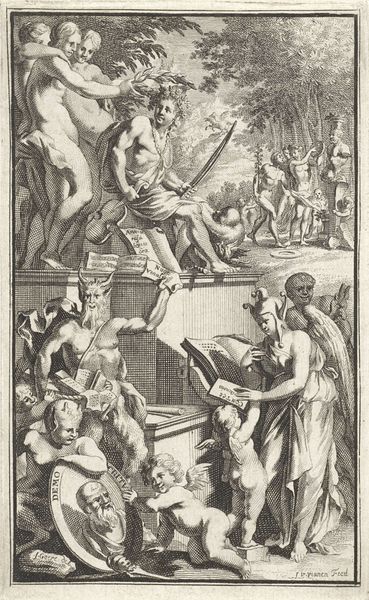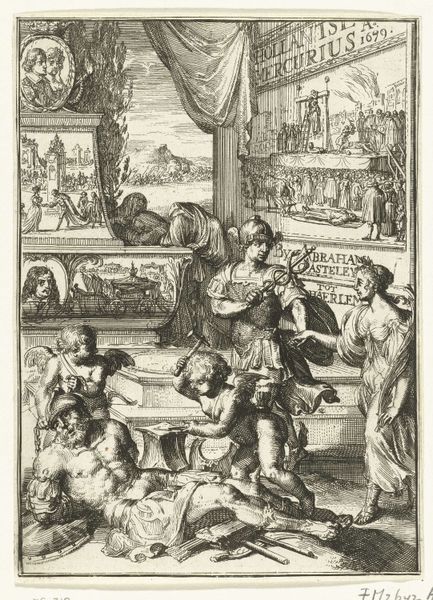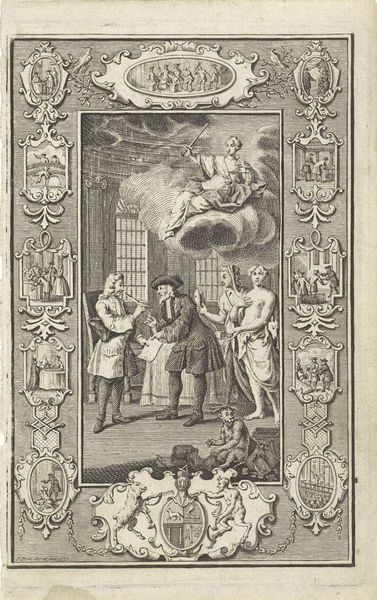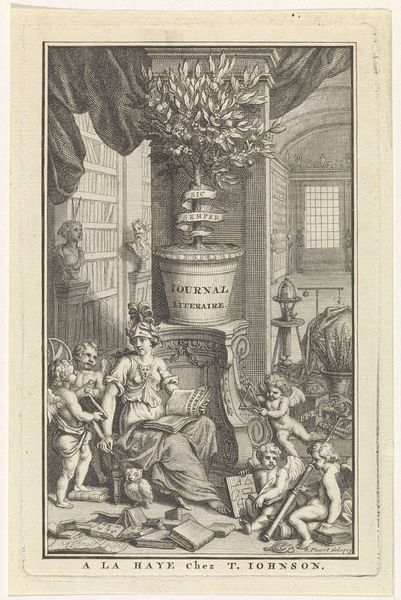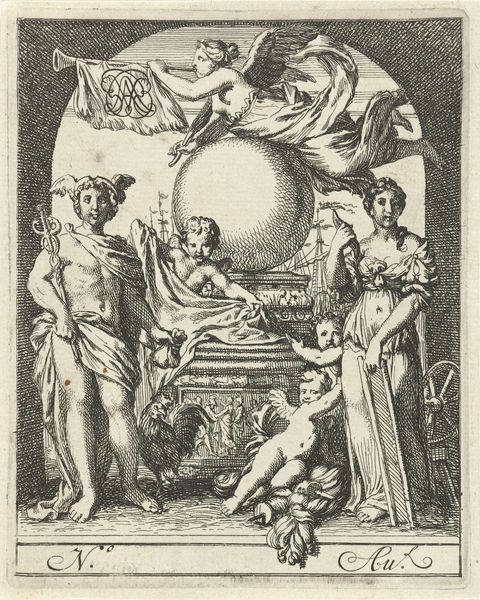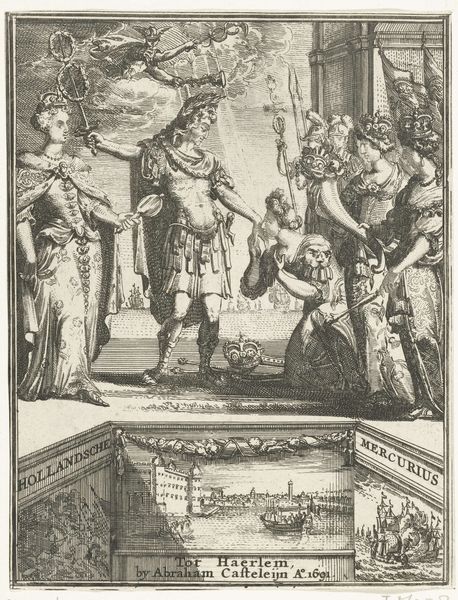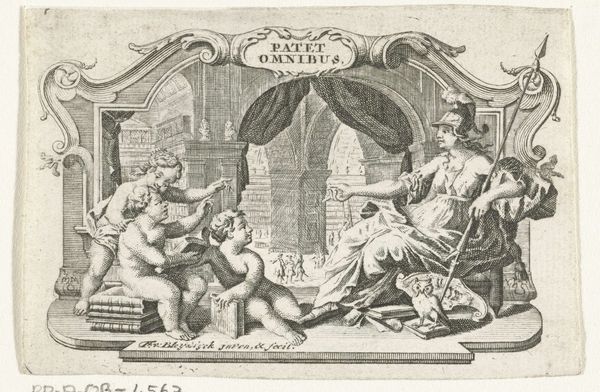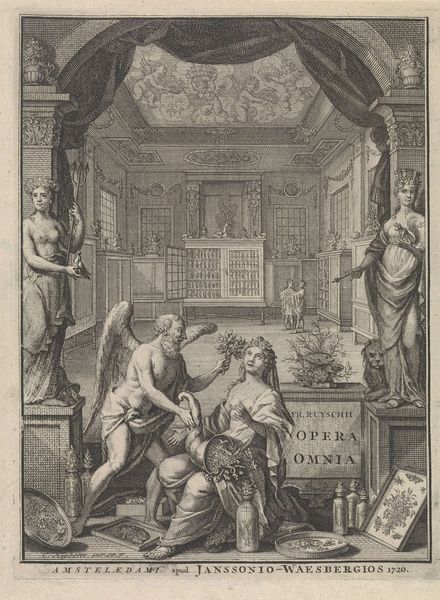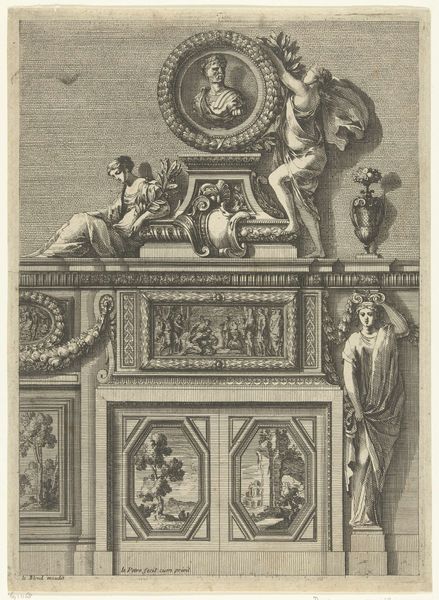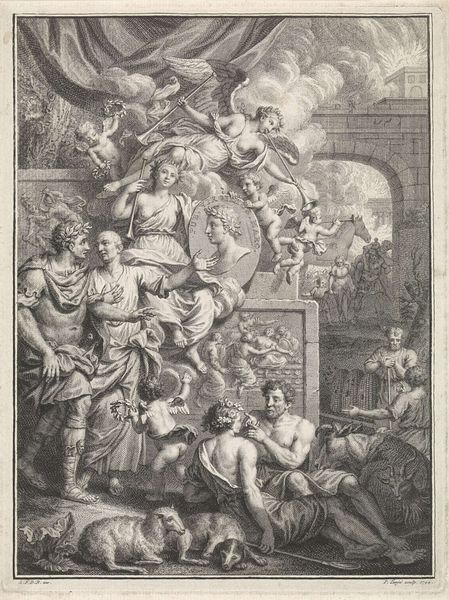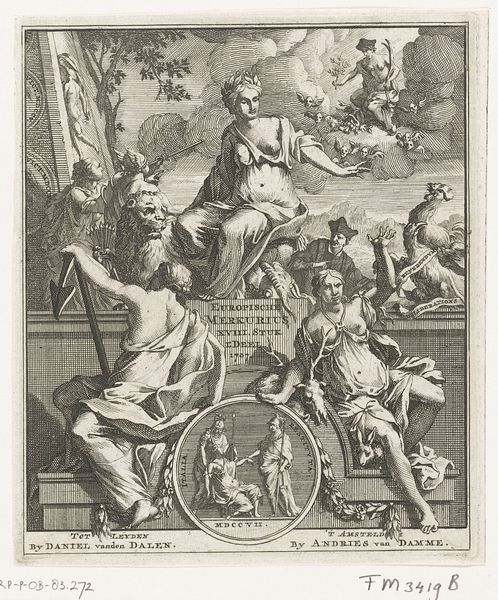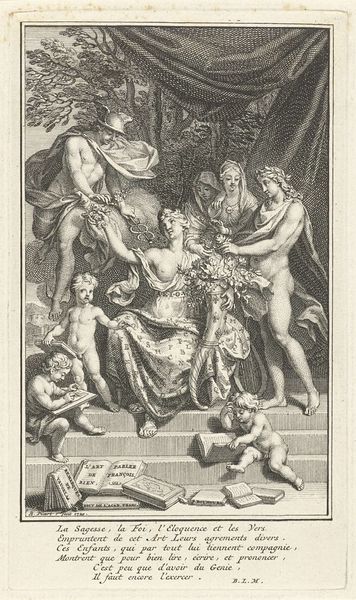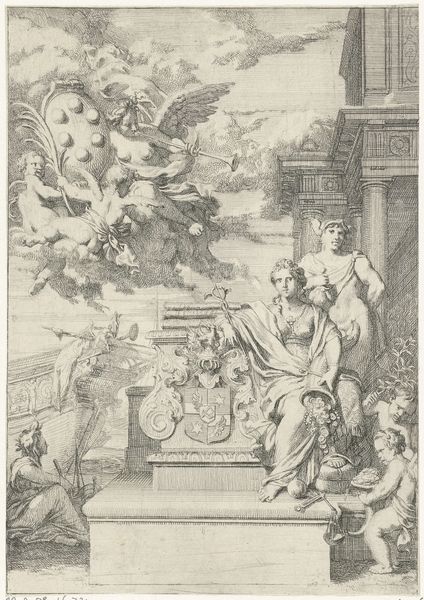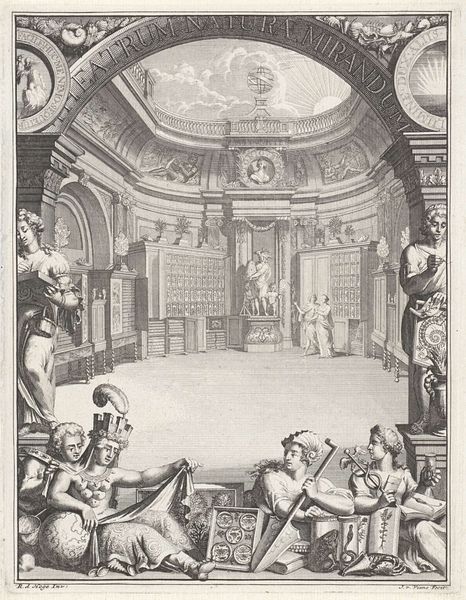
print, engraving
#
portrait
#
allegory
#
baroque
# print
#
pen illustration
#
figuration
#
line
#
cityscape
#
history-painting
#
engraving
#
realism
Dimensions: height 126 mm, width 78 mm
Copyright: Rijks Museum: Open Domain
Editor: This print, "Allegory on the VOC" by Jacob Folkema from 1723, it’s incredibly detailed for an engraving. The allegorical figures seem to represent different aspects of the Dutch East India Company. But, it’s hard to ignore that it's celebrating a company built on colonialism. How should we be reading this today? Curator: Exactly. Folkema’s print presents a sanitized, celebratory view of the VOC, but it's crucial to recognize the brutal realities it obscures. What visual cues tell us that this is about trade and prosperity rather than exploitation? Editor: Well, we see figures like Mercury with his caduceus, representing commerce, and Neptune, god of the sea, and an image of Amsterdam itself. Curator: Precisely. But consider whose prosperity is being depicted and at whose expense. The indigenous populations, the enslaved... their stories are notably absent. How can we contextualize this image with those untold narratives? Does the composition itself—the clear division between idealized figures and the distant cityscape—reinforce a separation between the beneficiaries and the exploited? Editor: So, we should consider the historical context and acknowledge what’s missing from the artist's depiction, the colonial violence of the VOC, not just the trade and prosperity. It seems to be about actively challenging this single celebratory viewpoint. Curator: Precisely. By questioning whose stories are being told – and whose are being erased – we can critically examine the legacy and lasting impact of this powerful company. Thinking about the function of this as a "pen illustration" forces the questions: Whose pen? Whose illustrations? Who controls the narrative? Editor: This print, seen in its historical context, is now more than a portrait of the Dutch East India Company; it's a prompt for critical thinking about colonial history. Thanks, that was insightful. Curator: My pleasure, remembering that art is not created in a vacuum. We must reflect on art’s role in reflecting and perpetuating these difficult histories.
Comments
No comments
Be the first to comment and join the conversation on the ultimate creative platform.
